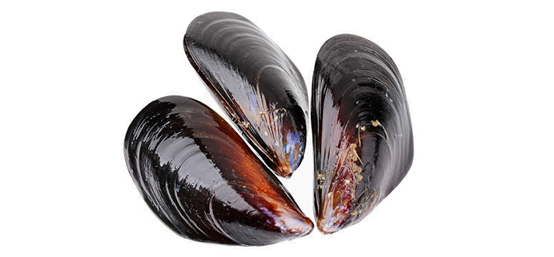The BLUE MUSSEL has a soft body formed
by two symmetrical lobes and a mantle from
which a foot protrudes, an oval black shell to
which other sea-living creatures may attach
themselves.
It is found in the Northeast Atlantic and the
Portuguese coast, in estuaries and ocean habitats,
inhabiting rocky intertidal zones, down to
10 m deep. It feeds by filtering on phytoplankton
and suspended matter. Spawning is seasonal
and the eggs are deposited in spring and late
summer in response to increased water temperature
and salinity, as well as increase in
available food.
It is captured by hand (picking). It is also
produced by aquaculture in the open ocean,
heavy investments having been made in this
economic sector off the Algarve coast.
One of the biggest predators of
the mussel is the star-fish; whenever this
carnivorous predator appears, the mussel
population suffers a significant decrease.
Peso mínimo de captura:
5 cm





